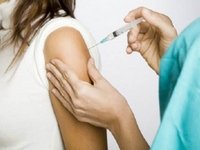Acne Treatment Hormonal Therapies
 Acne treatment hormonal therapies are directly related to women with skin problems. While puberty can be an issue for males and acne, typically, hormonal therapies are not used on men. Before understanding the treatment, it is best to understand how acne and hormones are released.
Acne treatment hormonal therapies are directly related to women with skin problems. While puberty can be an issue for males and acne, typically, hormonal therapies are not used on men. Before understanding the treatment, it is best to understand how acne and hormones are released.Sebum is a product created in the pores of your skin. During periods of hormonal imbalance, such as a menstrual cycle, sebum is overproduced. It is a thick, oil product that offers natural skin lubrication for any person. When it is over produced or it is not removed with effective cleansers, it will block the pores and create acne.
Hormones and Acne
For women, acne will occur seven to 10 days prior to bleeding on their menstrual cycle. It is during this part of the cycle that hormone levels start to change. Progesterone is on the rise during the mid-cycle, meaning a week to 10 days prior to actual bleeding. As progesterone is linked to increased sebum production, women start to present with acne about this time.If you plot estrogen, progesterone, luteinizing hormone (LH), and follicle stimulating hormone (FSH) and a women's menstrual cycle, you would see that at about day 14 to 16 is a heightened period of FSH and LH. These are the two hormones mostly associated with hair growth, as well as oil. The next phase is an increase in progesterone which increases the oil and sebum even more, so that day 10 to 26 of a menstrual cycle is the most common breakout period.
Testosterone is considered less affecting for acne particularly in women as it is in low doses. For men, testosterone can be a cause of sebum over production due to rises in their hormone levels. It means men with higher testosterone levels can have heightened acne issues.
According to National Institutes of Health:
- Women tend to have more fluctuation with their hormones than men. It explains the almost clock-work acne men have versus the constant and erratic appearance in some women.
- About half of adult women have occasional breakouts.
- Studies show approximately 60% to 70% of women, suffer from premenstrual breakouts.
- Women tend to have breakouts in their teenage years, throughout their 20s and 30s, during the menopause and pregnancy.
- Most women will see an increase in acne during the first trimester due to hormone level changes. However, there is also an increase of progesterone just prior to delivery which can stimulate another breakout period.
Hormonal Therapy to Reduce Acne
As a change in hormone levels is considered the reason for acne to occur, particularly in women, a treatment targeting hormones is thought to be extremely helpful. Acne treatments based on hormonal levels begin with two products: antiandrogens and oral contraceptives.Antiandrogens are pills that block testosterone or progesterone production in women. It limits the amount of sebum that can be produced due to improper hormone levels. Oral contraceptives, birth control pills, are known to correct hormone levels. They can reduce or stop menstrual bleeding, cramps, and even acne. It is again an issue of producing sebum, in which a balancing of hormone levels ensures that less sebum is produced.
When discussing antiandrogens or androgen receptor blockers (ARB), it means there is an inhibitor that blocks sebum. Think of a puzzle where you have a piece that fits, but with the introduction of the ARB the receptor changes, blocking the hormone from stimulating production of sebum. ARBs are more effective at blocking the effects of male hormones and thus acne; however, they are also used with women.
Side Effects of Hormonal Therapies
Women between 20 and 30 are often those who seek acne treatment hormonal therapy. They do so to correct irregular cycles, but also for acne due to excessive oil. If you suffer from painful menstrual cycles, wish to prevent pregnancy, or want to stop acne, then birth control pills or antiandrogens might be a solution.Unfortunately, you also have to realise there are side effects and risks. Birth control pills are known to cause weight gain, nausea, and increased irritability. They also affect your ability to become pregnant while taking them.
Birth control is also known to cause blood clots and other health related issues. These can be health risks that you may not want to face just to reduce your acne. Androgen receptor blocker medications should be used with caution for pregnant women and nursing/breast-feeding women.
Pros and Cons of Hormonal Therapies
| # | Pros | Cons |
|---|---|---|
| 1. | Reduced acne. | Health risks such as blood clots. |
| 2. | Potentially better menstrual cycle. | Nausea. |
| 3. | A balancing of hormones. | Weight gain. |
| 4. | - | Pregnancy issues. |
| 5. | - | Dry skin |
Alternatives to Hormonal Therapies
Acne treatment hormonal therapy can be costly. It is important to be wary of the cost, side effects, and health risks you open yourself up.There are numerous other treatments that are less risky to a person suffering from acne. Not only do these other treatments have more natural remedies, but they come with fewer side effects and healthy benefits.
For instance, acne treatment pills will eliminate a great many issues with acne. Acne treatment creams and cleansers are meant to clean the dirt and remove oils, while keeping the skin healthy. Vitamins and proper diet also help but it's recommended to look for the acne treatment pills with natural ingredients.
